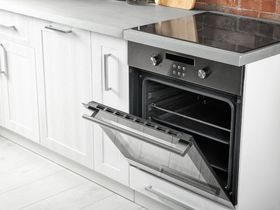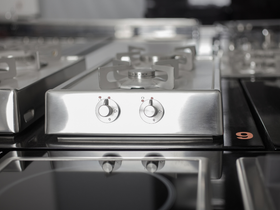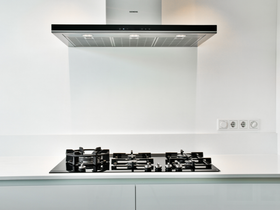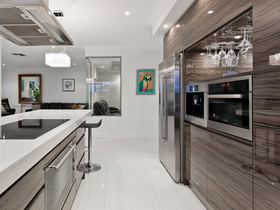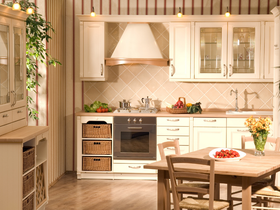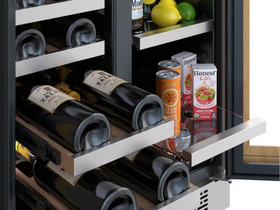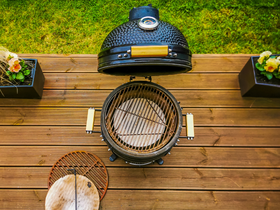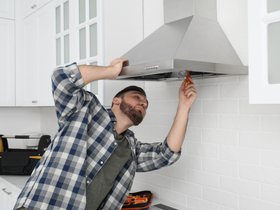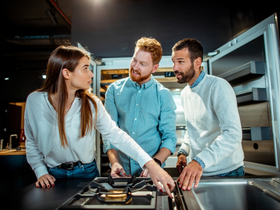
The 5 Most Overlooked Mistakes People Make When Choosing a Kitchen Range (And How to Avoid Them)
Avoid common kitchen range mistakes with our expert guide. Learn what most buyers overlook — from sizing issues to feature overload — and choose the right range the first time.
Shopping for a kitchen range should be exciting – after all, you're about to upgrade one of the most important tools in your kitchen. But let's be real: walk into any appliance store or start browsing online, and the sheer number of options can make your head spin faster than a convection fan.
Here's what we've learned after helping hundreds of customers find their perfect range: the biggest problems don't happen after you buy – they happen before you even place the order. Most kitchen range regrets are totally preventable, and they usually stem from five surprisingly common oversights that even smart shoppers make.
The good news? Once you know what to watch out for, choosing the right range becomes much more straightforward. We're going to walk through the five mistakes we see most often, plus exactly how to sidestep them so you end up with a range you'll love cooking on for years to come.
Mistake #1: Not Measuring Properly
This one tops our list because it's both the most common mistake and the most frustrating to fix. Nothing deflates the excitement of your new range delivery quite like discovering it won't actually fit in your kitchen.
Width, Depth, and Height Considerations
Most people measure width and call it good, but ranges are three-dimensional objects going into three-dimensional spaces. Here's what actually matters:
Width: Standard ranges are 30 or 36 inches, but your cutout might be slightly different. Measure the actual opening, not just the old range. Some older homes have non-standard dimensions that can cause headaches.
Depth: This is where people get caught off guard. Newer ranges are often deeper than older models, and some slide-in ranges sit further forward than freestanding ones. Measure from the back wall to where you want the front of the range to sit.
Height: Check both the overall height and the cooktop height. If you're switching from a coil-top electric to a gas range, the cooking surface might end up at a different level than your countertops.
Ventilation and Clearance Requirements
Every range needs breathing room, but the requirements vary by model. Gas ranges typically need more clearance above the cooktop, while high-BTU models might need extra side clearance. Check your specific model's requirements – they're usually in the product specifications.
Common Fit Issues That Catch People Off Guard
The backguard bump: Some ranges have a raised back panel that might not clear low cabinets or windows behind the range.
Countertop lips: Granite or quartz countertops with thick edges can interfere with slide-in ranges that need to sit flush.
Door swing: Make sure oven doors can open fully without hitting islands, cabinets, or other appliances.
💡 Pro Tip: Take photos of your space from multiple angles and bring them when shopping. It's easier to spot potential issues when you can see the whole picture.
Mistake #2: Choosing the Wrong Fuel Type
Falling in love with a range before checking if your kitchen can actually support it is like picking out a sports car before confirming you have a garage. It happens more often than you'd think.
What Happens When Your Kitchen Isn't Set Up for Your Range
Dreaming of gas but no gas line? Adding a gas line isn't impossible, but it's not cheap either. Expect to pay anywhere from $500 to $2,000 depending on how far the line needs to run and what obstacles are in the way.
Going electric but need an outlet upgrade? Electric ranges need 240-volt service, which might require electrical panel upgrades in older homes. Another surprise expense that can add hundreds to your project.
The Hidden Costs of Switching Fuel Sources
It's not just about running new lines. You might also need:
- Permit fees and inspections
- Cabinet modifications to accommodate different connections
- New cookware (especially if switching to induction)
- Updated ventilation requirements
When Dual-Fuel Is Worth the Upgrade
Dual-fuel ranges give you gas burners with an electric oven, but they need both gas and 240-volt electrical connections. It sounds complicated, but if you're already planning kitchen electrical work, the incremental cost might be worth it for the cooking flexibility.
The reality check: Don't let fuel type drive your entire range choice unless you're prepared for the installation costs. Sometimes the "perfect" range isn't worth rewiring your entire kitchen.
Mistake #3: Overbuying or Underbuying Features
This is where good intentions go sideways. Either you get seduced by every bell and whistle in the showroom, or you go too basic and regret it every time you cook.
Getting Seduced by Features You'll Never Use
The feature trap: That built-in temperature probe sounds amazing until you realize you've used it exactly twice in two years. The warming drawer seems essential until it becomes expensive storage for takeout containers.
Smart features overload: WiFi connectivity and app controls are genuinely useful for some people, but ask yourself honestly: do you really need to preheat your oven from the grocery store, or would simple, reliable controls serve you better?
Skipping Essential Features That Match Your Cooking Style
On the flip side, going too basic can be just as frustrating:
If you bake regularly: Convection isn't just a nice-to-have – it's a game-changer for cookies, roasted vegetables, and getting crispy results.
If you cook for a family: That fifth burner or double oven might seem excessive until you're trying to get Thanksgiving dinner on the table.
If you entertain: A high-BTU burner for searing or a built-in griddle can make hosting much more enjoyable.
Double Oven vs. Warming Drawer Confusion
Here's a common dilemma: you want extra cooking space, but should you go with a double oven or a range with a warming drawer?
Double ovens are better if: You frequently cook multiple dishes at different temperatures, do a lot of holiday cooking, or regularly bake while cooking dinner.
Warming drawers are better if: You mainly need to keep food warm, want to proof bread, or prefer one large oven space most of the time.
💡 Smart Features Worth Considering:
- Convection cooking – genuinely improves results
- Self-cleaning ovens – saves time and effort
- Multiple oven racks – more flexibility than you'd expect
Features You Probably Don't Need:
- Steam cleaning – sounds great, still requires scrubbing
- Too many specialized burners – one high-BTU burner usually does the job
Mistake #4: Ignoring Installation & Ventilation Needs
Nothing kills the excitement of a new range quite like discovering it needs a $1,500 range hood upgrade or professional installation that costs more than you expected.
Cost and Complexity of Installation
DIY reality check: While some handy homeowners can install ranges themselves, gas connections always require professional work. Even electric ranges can be tricky if you need outlet modifications or the range is particularly heavy.
Hidden installation costs:
- Gas line testing and leak checks
- Electrical panel upgrades
- Cabinet modifications for slide-in models
- Anti-tip bracket installation (required for safety)
The Importance of Proper Venting
This is especially critical with gas ranges and high-BTU models. Poor ventilation doesn't just mean lingering cooking odors – it can affect air quality and even safety.
Ventilation rules of thumb:
- Your range hood should be at least as wide as your cooktop
- Plan for 100-150 CFM per linear foot of cooktop
- High-BTU ranges (over 65,000 BTU) often need commercial-grade ventilation
Impact of Poor Airflow: Inadequate ventilation can lead to excessive heat, moisture problems, smoke alarms going off during normal cooking, and poor indoor air quality. It's not just about comfort – it's about safety and your home's condition.
When to Budget for Ventilation Upgrades
If you're upgrading from a basic electric range to a powerful gas range, your existing hood might not be adequate. Factor this into your budget from the start rather than discovering it after installation.
Mistake #5: Forgetting About Maintenance & Longevity
In the excitement of choosing features and finishes, it's easy to forget that you'll be living with this range for 10-15 years. How it holds up and how easy it is to maintain matters more than you might think.
Ease of Cleaning Matters More Than You Expect
Control considerations: Touch controls look sleek, but they show fingerprints and can be harder to clean than simple knobs. Knobs are also more intuitive and work during power outages.
Grate and burner design: Some gas ranges have dishwasher-safe grates, while others require hand washing. Sealed burners are easier to clean than open burners, but they might not distribute heat as evenly.
Finish durability: Stainless steel looks great but shows water spots and fingerprints. Black stainless hides fingerprints better but can be harder to match with other appliances. Consider how much time you want to spend keeping your range looking good.
Repair Accessibility and Parts Availability
Brand reputation matters: Stick with established brands that have good service networks and readily available parts. That amazing deal on an unknown brand might not seem so great when you need repairs.
Complexity vs. reliability: More features usually mean more things that can break. Consider whether those extra bells and whistles are worth the potential repair headaches.
Why Long-Term Upkeep Matters More Than the "Wow" Factor
The 5-year test: Ask yourself how the range will look and function after five years of regular use. That gorgeous white finish might show every stain, while those complex electronic controls might be the first thing to fail.
Maintenance accessibility: Can you easily clean behind and around the range? Are filters and other maintenance items easy to access and replace?
Future-proofing: Consider how your cooking habits might change. Young couples often evolve into families that need more cooking capacity, while empty nesters might prefer simpler, more reliable appliances.
What to Double-Check Before You Buy
Before you fall in love with any range, run through this checklist:
✅ Measure everything – width, depth, height, and clearances
✅ Confirm fuel compatibility – do you have the right connections, or what will it cost to get them?
✅ Match features to your cooking style – not too basic, not too complicated
✅ Factor in installation costs – including ventilation upgrades if needed
✅ Consider long-term maintenance – how it will look and work after years of use
Remember: The perfect range isn't the one with the most features or the lowest price – it's the one that fits your space, matches your cooking style, and works reliably for years to come.
When in doubt, don't guess. A quick conversation with someone who knows ranges inside and out can save you from expensive mistakes and help you discover options that are perfect for your specific situation.
Still Unsure? Let's Talk It Through
Choosing the right range doesn't have to be stressful. If you're feeling overwhelmed by all the options or want to double-check your decision, our experts are here to help. We've guided hundreds of customers through this process and can help you avoid these common pitfalls while finding a range you'll love.
Ready to find your perfect range? Talk to our experts or shop our ranges by type to get started with confidence.


